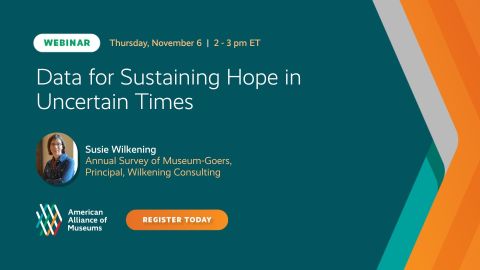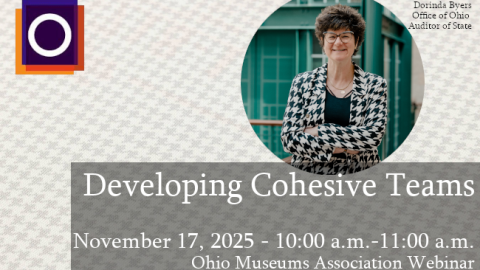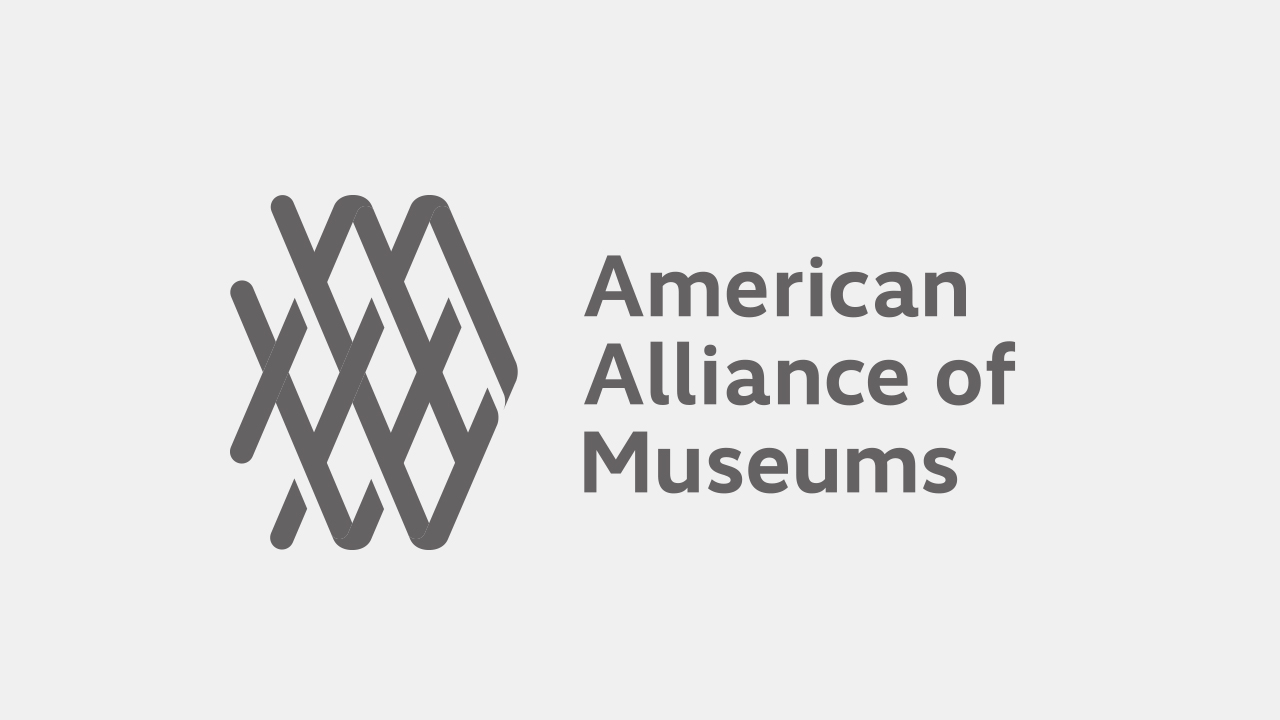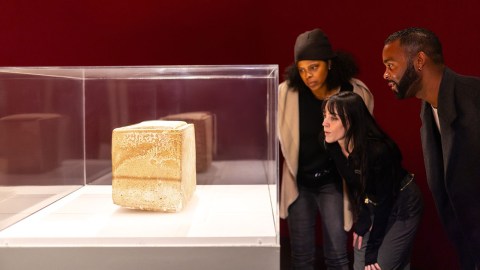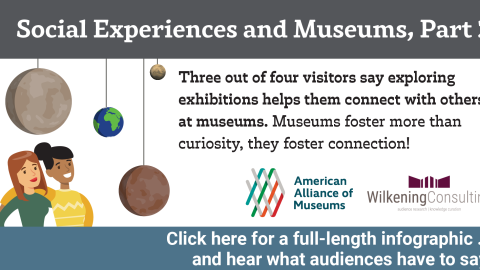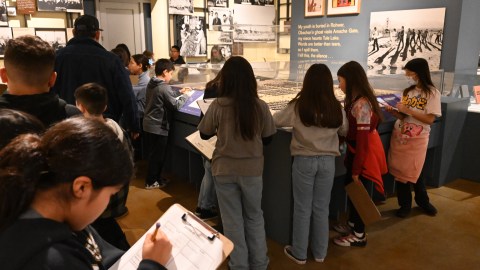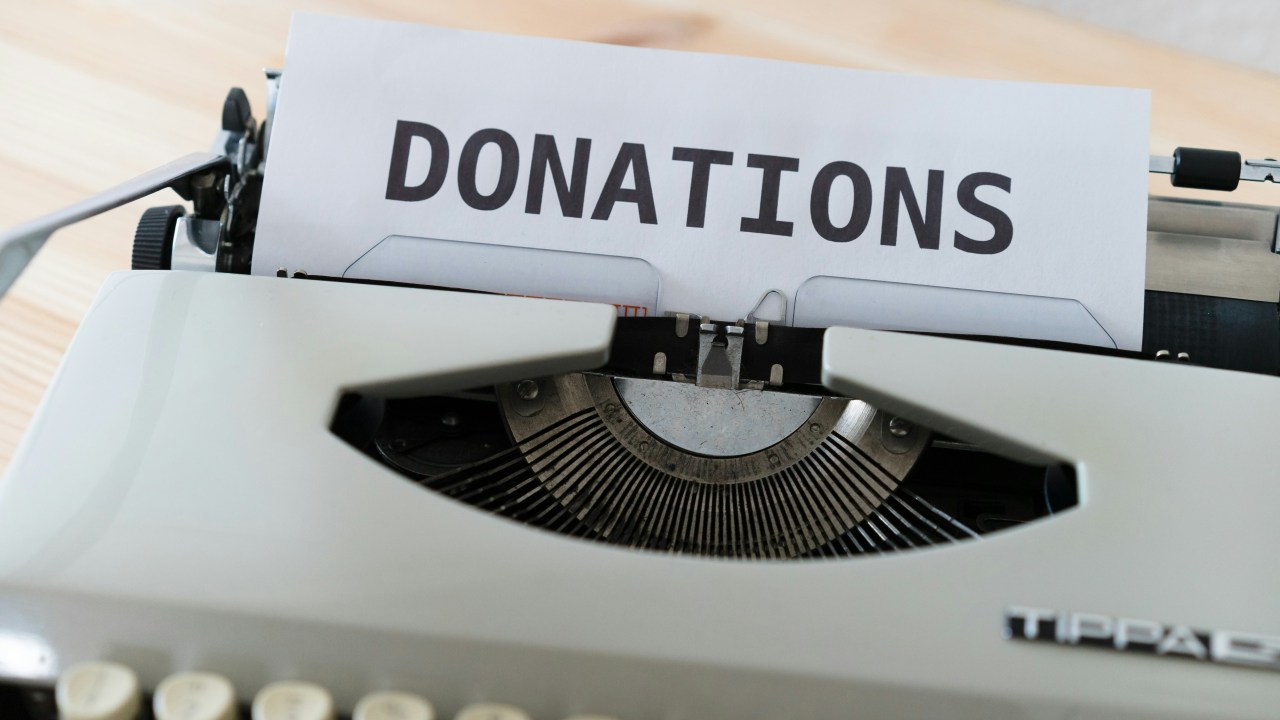
Welcome to part three of my exploration of the current and potential future impacts of presidential orders and actions on museums’ income streams and business models. If you’re joining midstream, you may want to pause and read the first post in the series of essays, which introduces the topic and looks at government funding, as well as part two, which looks at the direct and indirect impacts on earned income. (That second post, which includes some economic projections for the coming year, is particularly pertinent to today’s installment.)
Some Context
Charitable giving overall constitutes an average of 30 percent of museums’ income (2024 Museum Board Leadership: A National Report, AAM). That share has risen over the past few decades, taking up the slack as government funding has, proportionately, decreased. For the nonprofit sector overall, about 67 percent of charitable dollars come from individuals, and 33 percent from foundations (Giving USA 2024 Report).
EO Impact on Individual Philanthropy
How might executive orders and actions disrupt individual giving? To start with, the overall economic outlook (see last post—it’s cautiously grim) may affect the ability of average (non-wealthy) donors to give. Also, some donors may shift their priorities for giving in coming years, for example towards building a safety net for families suffering from current policies, or to support civic institutions and bolster democratic attitudes. Rising ideological polarization may fragment giving as well. We were seeing this effect even before the election: In AAM’s 2024 National Snapshot of US Museums, 34% of directors indicated that they had already experienced some kind of DEI backlash, with 11% reporting pressure from donors.
Bright spot
Many people love and support the work of museums, and many donors are looking for ways to support the institutions they love in the face of attacks. However—channeling the collective wisdom I’m hearing in webinars and conversations—donors and potential donors may need some help knowing what, exactly, your museum needs, and how they can help you through current difficulties. It can be particularly effective to focus on the real-world impact of such financial lifebuoys—who will you be able to serve, what programs will be saved—in addition to the financial bottom line. Donors want to know how they are making things better, even in small, incremental steps.
We are already seeing examples of individuals stepping in to fill gaps left by the cancellation of government grants. When the Japanese American National Museum lost critical funding from the NEH for a continuing education program for teachers, an anonymous donor pitched in $85k, leading to a successful $170k appeal that saved the program. Around the country, pastors of Black churches have been rallying their congregations to support the National Museum of African American History and Culture in the face of attacks.
These are uplifting stories of regular folks pitching in to make a difference. However, if individual giving is to fill in the considerable gap left by the collapse of federal funding, the nonprofit sector might do well to focus their expectations on the top of the pyramid of wealth inequality. According to the 2023 Bank of America Study of Philanthropy, “affluent” households, with a median income of $350k and median wealth of $2 million, rank arts and culture as #4 in importance for their giving. However, as a share of total giving, only 2.4% of their contributions go to this category. (If you are being an optimist, you can see this as room for growth.) Even more promising, in their capacity to give and their immunity to economic disruptions, is the small but growing cadre of “ultra-wealthy” individuals (with a net worth of at least $30 million), that is responsible for 38% of individual giving in the US.
Something to Watch
It may be unreasonable to expect individual giving to solve the current crisis. However, there is one source of existing charitable wealth big enough to be of significant help. Donor Advised Funds are charitable giving accounts that receive irrevocable contributions from donors who can eventually recommend grants to charities of their choice from that fund. This is a good deal for donors, who can take an immediate tax deduction, while punting the decision about when to give and to whom. That’s led to a lot of criticism of the format. Philanthropy gadfly Vu Le has described DAFs as “slimier than a banana slug and not nearly as cute.” As contributions to DAFs count towards foundations’ (already low) minimum disbursement, they also soak up charitable funds that could otherwise go directly to nonprofits. And DAFs can hold funds indefinitely. (As Vu puts it, “the money can just sit there until the heat death of the universe.”)
However, the very provisions that allowed DAFs to accumulate wealth mean that they are a relatively untapped source of money in a time when funds are increasingly tight. In 2023, DAFs held over $251 billion in wealth, having increased by 400% in the past decade. While they are not compelled to increase their giving to meet current needs, donors could open the floodgates if they so choose. (If you want to nudge them in that direction, see Rasheeda Childress’ tips on how to identify and influence DAF donors.) There are ongoing bi-partisan legislative efforts to increase the minimum distributions from DAFs, which would force some of these funds into nonprofit coffers.
EO Impact on Foundation Funding
Foundation giving will be influenced by some of the same factors affecting individual giving—notably the performance of the economy, and potentially changing priorities in the face of many urgent needs.
In addition, foundations are themselves under attack, with the explicit threat of civil litigation for their support of “illegal DEI.” The Chronicle of Philanthropy identified 346 foundations, collectively holding $900 billion in assets and accounting for over half of all grant dollars awarded, that fall under the parameters of the EO. (The Chronicle has been criticized for assembling those names in one, easy to find place, and I’m not including a link.) Charitable organizations at risk include many long-time supporters of museum work, including the Ford, McArthur, and Rockefeller Foundations. That threat may be in abeyance, as a federal judge in California recently blocked the administration from enforcing anti-DEI and anti-transgender executive orders, noting that the executive branch “cannot weaponize Congressionally appropriated funds to single out protected communities for disfavored treatment or suppress ideas that it does not like or has deemed dangerous.” This stay will likely be appealed by the administration, and it may take some time for the issue to wend its way through the courts. However, in the meantime, the mere threat of litigation may have a chilling effect on foundation giving, as well as diverting some of their resources towards preparing their defense.
Bright Spot
In the face of these pressures, many foundations are rallying to support their values. Six hundred and ninety five have signed the Unite in Advance statement, which asserts that “as charitable giving institutions, we are united behind our First Amendment right to give as an expression of our own distinct values. Especially in this time of great need, we must have the freedom to direct our resources to a wide variety of important services, issues, and places, to improve lives today and build a stronger future for our country. The health and safety of the American people, our nation’s economic stability, and the vibrancy of our democracy depend on it.”
Another 158 grantmaking organizations have signed the Meet The Moment Pledge, launched by the Trust-Based Philanthropy Project. Signatories pledge to (among a long list of actions):
- Offer “support beyond the check,” such as access to legal services and risk assessment.
- Collaborate with other funders to pool funds, eliminate administrative burdens, and invite nonprofits to inform plans.
- Commit to multi-year, unrestricted funding.
- Increase their grantmaking budget for the next four years.
- Where possible, make gifts instead of grants.
To give one example, the MacArthur Foundation has promised to raise the giving rate from their endowment to 6 percent (from the IRS minimum of 5%) for the next two years, and to use trust-based practices to reduce the administrative burden on grantees. However, while welcome, tweaking charitable giving in this way would fall far short of filling the gap. According to Candid, the 30% of nonprofits that file IRS 990 forms receive $303 billion annually from the government. (For scale, Vu Le cites experts who estimate that foundations increasing their payout from 5% to 6% would free up an additional 15 to 20 billion dollars each year.) By Candid’s analysis, to make up for the loss of government grants, private foundations would have to increase their grantmaking by 282%. That said, the nonprofit sector should be vocal in its admiration and support for foundations that are stepping up to help with financial and practical support for their grantees.
And to return to my observation about ultra-wealthy individuals, in the previous section, perhaps more members of this elite group will follow the example of MacKenzie Scott and establish significant new giving streams in alignment with evolving best practices. Scott has given over $19.25 billion to over 2,450 nonprofits through her Yield Giving foundation in the form of unrestricted gifts with few reporting requirements and no time limits on spending the funds. The top one percent of wealthiest people in the US controlled over $49.2 trillion in 2024. This group, collectively, does have the ability to fill the gap left by federal funding cuts. Short term, this would be a lifesaver. Long term, I fear it would inevitably result in a nonprofit sector that mirrors the values and priorities of that 1%. Would this be inherently better, fairer, more equitable, or less partisan, than the messy, imperfect but relentlessly democratic process (per Oliver Wendell Holmes) of funding civilization via taxes?
Something to Watch
Proposals to tax foundation endowments. In 2021, J.D. Vance (now Vice President Vance) proposed taxing the endowments of wealthy foundations or requiring them to use 20% of their assets each year. (This might go some way towards replacing federal funds in the short term, but it would effectively force foundations to sunset themselves in less than a decade. Which is actually the point of Vance’s proposal—I’ll say more about that in the last essay in this series.)
This idea continues to have legs—the current version of the House version of the tax package would tax the investment income of private foundations, with rates ranging from 1.4% on those with assets under $50 million, up to 10% for those with assets over $1 billion. The plan released by the Senate Committee on Finance on June 16 does not include this tax—we are standing by to see if it is also omitted from the bill passed by the Senate, and accepted by the House.
EO Impact on Investment Income
The portion of a museum’s income derived from investments varies widely by organizational type and size, averaging 2% for science/technology centers and children’s museums, and 16% for art museums. (That data is from Museum Board Leadership 2017: A National Report, but the figure in the published report contains an error. See the corrected figure, below.) In the 2024 Museum Board Leadership data, the overall average for the field was 13%.

President Trump’s frequent changes in direction regarding policy (tariffs, deportations, taxes) make it hard to provide any stable analysis of market projections for 2025. However, one thing that holds true is that “the markets hate uncertainty,” and these times are nothing if not uncertain. Even a single remark can have seismic repercussions: the DOW fell 1,000 points in April after Trump criticized Federal Reserve Chair Jerome Powell. Overall, this presidential term started with the worst “first 100 days” for the markets since 1974. (For historical context, last time the US experienced a profound market shock, during the 2008-2012 financial crisis, over 63% of museums reported their investment income declined [Service Despite Stress, AAM 2010].) On the upside, the stock market has rebounded in recent weeks, though significant uncertainty hinges on continued sparring with China over tariffs, and escalating global conflict.
Bright Spot
President Trump is very bullish on cryptocurrency, and disclosed over $57 million in income from his own crypto firm in 2024. He campaigned on a promise to make the US the “crypto capital” of the world, leading him to roll back some of President Biden’s regulations of the crypto industry. One Executive Order declares the administration will “support the responsible growth and use of digital assets, blockchain technology, and related technologies across all sectors of the economy” and another establishes a US Strategic Bitcoin Reserve. Several states are diversifying their portfolios to include Bitcoin (the most mainstream cryptocurrency), betting they have significant potential for growth, as well as serving as a hedge against inflation.
Nonprofits have been integrating cryptophilanthropy into their fundraising over the past five years. If the current administration’s policies lead to a surge in cryptowealth, that could impact individual giving (so add this bright spot to under charitable contributions as well). To date, most nonprofits that accept cryptocurrency donations immediately convert it to cash, because of the extreme volatility of the crypto market. However, if crypto is about to experience a sustained surge, backed by federal policy, perhaps it will become a profitable (albeit still risky) form of investment in coming years. (Please, don’t take that as an expert recommendation. Consult your financial advisor!)
Something to Watch
This is not so much something to watch, as something to think on. If, as some analysists think, the administration’s policy initiatives trigger a profound and extended shock to the national economy, it will be the third such disruption in the past two decades. During the first two—the 2008-2012 financial crisis and the COVID-19 pandemic—many nonprofits drew on their savings to keep the doors open and retain staff. A common goal for nonprofit reserve funds is 3–6 months. Early in the pandemic, one third of directors feared their museums were at risk of permanent closure; over half had six months or less of operating reserves on hand, and four years later, only half had rebounded to pre-pandemic attendance levels.
The 21st century has been described as a “VUCA” world—volatile, uncertain, complex, and ambiguous. “Once a century” climate events such as floods and storms are becoming yearly occurrences. Perhaps, in this fragile and deeply interconnected global economy, once-rare extended economic shocks are becoming more common as well. If this is so, museums may need to increase their financial buffers, including the size of their operating reserve, as a normal part of risk management. (The last few months have shown what a profound effect federal policies can have on all major sources of museum income. Despite that, I suppose a reserve containing four years of operating revenue is an impractical goal. *Sigh*)
Up Next
The final entry in this series will take a deep, dark dive into the growing threats to the bedrock of museum financial models—tax exemption and nonprofit status itself. However, I promise if you wade through the depressing bits, I will end with a note of hope. Meanwhile, hang in there.
Yours from the future,

Elizabeth Merritt
VP Strategic Foresight and Founding Director, Center for the Future of Museums, American Alliance of Museums


